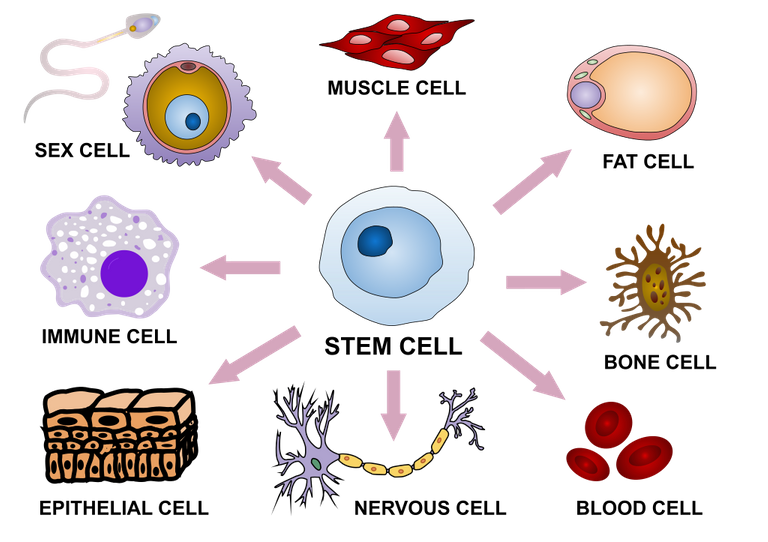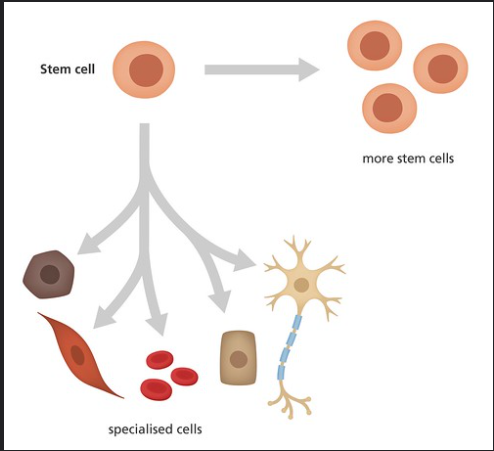Trees are unique living things, just because they regenerate! Whenever you cut a tree down, as long as the root is still viable, that tree will grow beautifully under favorable circumstances. If you have ever had organ damage, you will know how mentally demoralizing it can be, since we all come to the earth with special organs that are protect dearly both consciously and naturally because we do not have the ability to regenerate damaged organs.
Regeneration is a process of restoring damaged cells, tissues, or organs in the body of a living organism. In some extreme cases, it can even involve the restoration of an entire body part of an organism. Regeneration can be natural or artificial depending on if interference is made to stimulate the process.

The human body, unlike trees and some other living organisms, cannot cook up some new hands or a new heart, for example. But either naturally or as a result of the rigour of living, human organs sometimes get damaged. Of course, humans have a certain level of regenerative ability, but it is not enough in cases when an entire organ, tissue, or body part gets damaged.
There was a story of a mother who lost a son after a fatal accident, but while in his critical condition, she made a choice to donate his organs to save other people's lives. It was a difficult decision though, but it was taken and years later, she was glad her son was able to save other lives.
There are certain organs that can be donated and one would remain alive. For example, humans can live and function normally with just a single kidney even though we all have two. The human organ market is a multi-billion dollar market and it keeps booming with each passing day. As of today, a kidney in the United States goes for as high as 262,0000 USD while a liver goes for 557,000 USD.
Even if one has got the money to afford these organs when in need, another headache is to get donors legally. Even after getting willing and legal donors, one needs to start begging his stars that the donor will match the recipient in terms of blood group, rhesus factor, and some other characteristics. Well, thanks to advanced research in stem cell biology, now there is hope on the horizon without the rigours of having to look for matching donors and perhaps, as much money.

What are Stem Cells?
Stem cells are special cells that have the ability to develop into many different cell types. In other words, they are undifferentiated cells that can be manipulated either naturally or artificially to divide, differentiate and become specific tissue, or organ. Since stem cells have the ability to develop into many different cell types, they are basically the raw materials for regeneration in the body. Evidence from various research has proven the ability of babies to heal a mother's damaged organs by releasing stem cells.
Potential Uses of stem cells
Because of their ability to differentiate into many other cells, it is believed that stem cells can be used to treat some diseases or abnormalities. Stem cells can therefore be used to grow new cells in the laboratory that will replace damaged tissues or organs, and correct part of organs that are not functioning properly. They can also be used to find the causes of genetic defects, causes of diseases like cancer, and also to test the effectiveness of a drug.
Types of stem cells.
Stem cells are categorized into four main types according to their purposes.
Embryonic Stem Cells
These stem cells are gotten from embryos that are about four to five days old. These stem cells have the potential to differentiate into many different cells hence, are referred to as pluripotent stem cells. The main disadvantage with these stem cells despite their numerous medical probabilities is that the embryos are destroyed in the process of harvesting the stem cells, as such it is not a popular means of acquiring stem cells especially amongst people that believe life begins at conception.Adult (non-embryonic) stem cells
Do not let the name deceive you, these stem cells are found in infants as well as adults. They come from developed body organs and are used by the body to replace or repair the damaged tissue in the same area in which they are found. These cells do not differentiate into many other cells as embryonic stem cells but can also come in handy in the cause to find a better solution to organ damages beyond transplanting.Induced Pluripotent Stem cells
Remember embryonic stem cells are called pluripotent stem cells. Scientists have figured out a way to turn adult stem cells into pluripotent stem cells so they can differentiate into specialized cells in the body. Therefore, they are called induced pluripotent stem cells.Cord blood stem cells
Stem cells can be harvested immediately when a baby is born from its umbilical cord unlike before when it was discarded, it can now be frozen in cell banks for use in the future. The stem cells can be used to treat a wide range of diseases including leukemia. These cells are obtained from the umbilical cord blood and are easy to collect. The stem cells are made up of hematopoietic (blood) cells, which are rare cells found in the bone marrow that are capable of producing other blood cells such as red and white blood cells.
Final Words
Regeneration of organs is driven by cell division but organ regeneration in humans and mammals, in general, has biological limitations. Hence, depending on the extent of the damage, an organ might need to be replaced totally. In order to do this, a donor that will match the recipient would be needed. This is why the organ market is booming. Now, thanks to stem cells which are undifferentiated and actively dividing cells, the problem of having to look for donors might soon be over. The stem cells can be manipulated to grow new tissues or organs that are specific to our needs. The different types of stem cells available for use have been highlighted in this article.
Thank you all for reading.
Nice post. I heard a lot of legal back forth is going on in the US about stem cell research. I don't know if the future of stem cell research is secure
This is an interesting read. Stem cell can help prevent and slow down disease and aging. !discovery 15
This post was shared and voted inside the discord by the curators team of discovery-it
Join our community! hive-193212
Discovery-it is also a Witness, vote for us here
Delegate to us for passive income. Check our 80% fee-back Program
Thanks for your contribution to the STEMsocial community. Feel free to join us on discord to get to know the rest of us!
Please consider supporting our funding proposal, approving our witness (@stem.witness) or delegating to the @stemsocial account (for some ROI).
Please consider using the STEMsocial app
app and including @stemsocial as a beneficiary to get a stronger support.